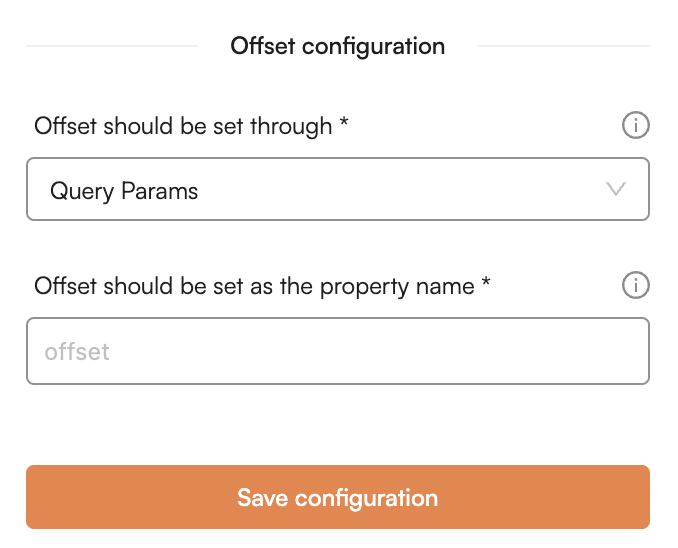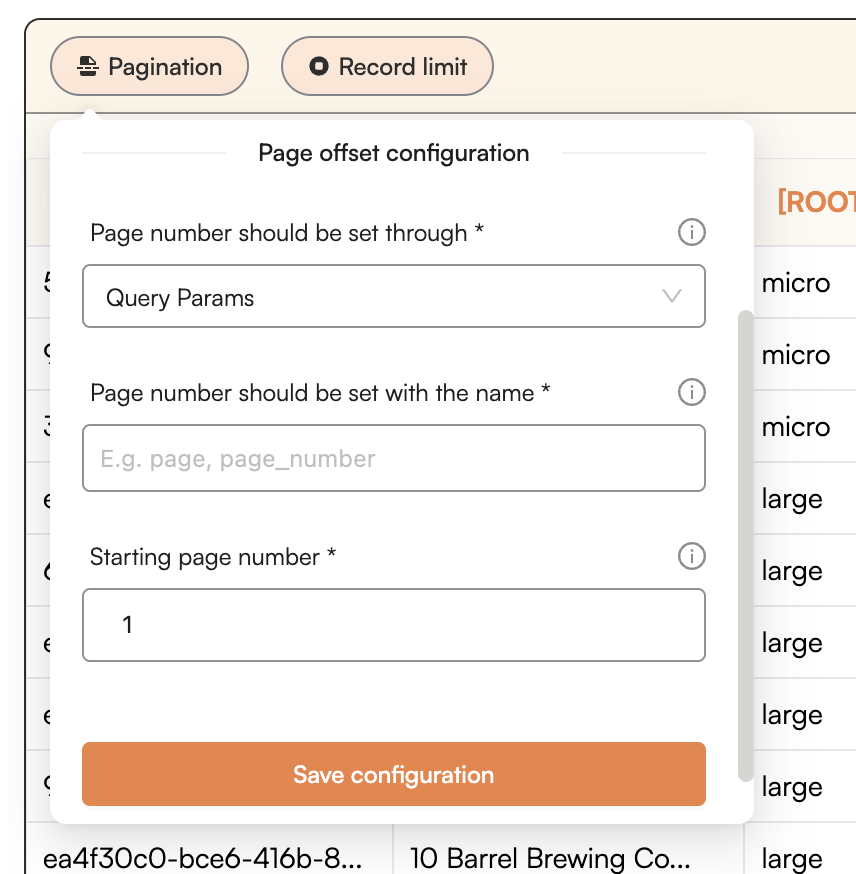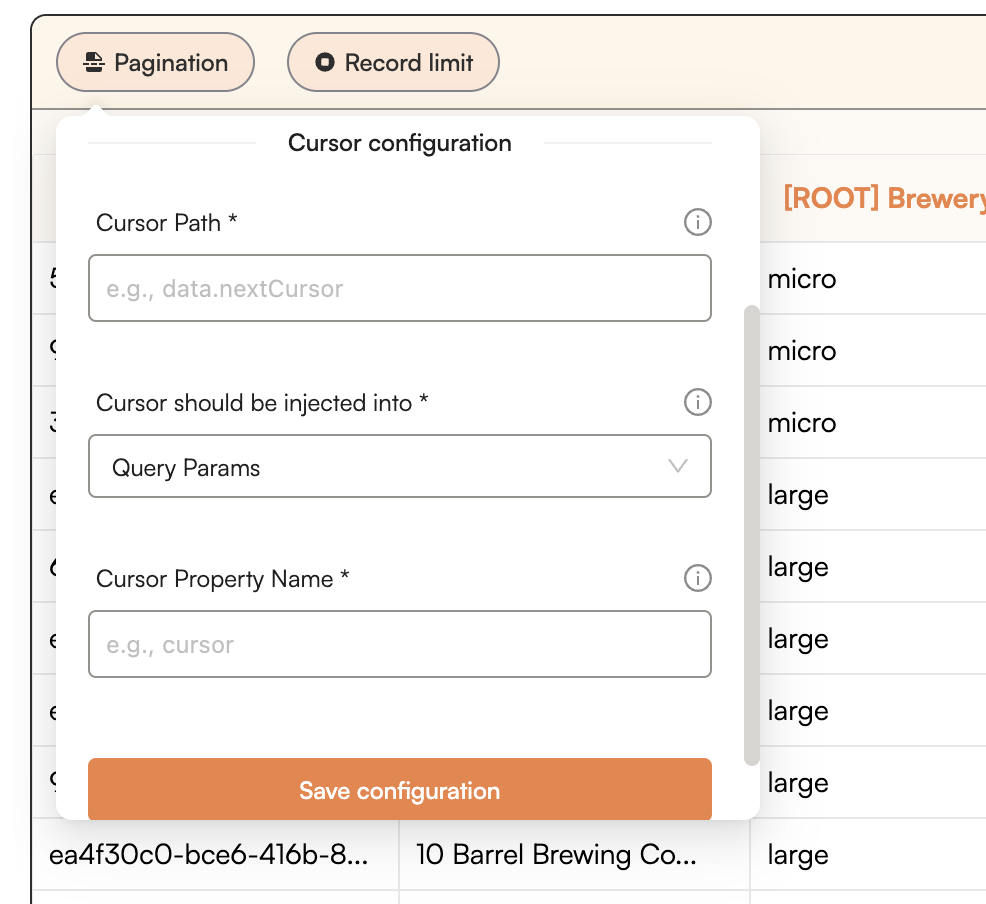data preview section.
Configuring Offset Based Pagination
When setting up offset-based pagination in Superjoin’s Custom API, you’ll encounter a few specific fields that help define how data is fetched in segmented ways. Here’s a simplified explanation of each field to help you understand and configure pagination efficiently, even if you’re not deeply familiar with API mechanics:| Field | Required | Description |
|---|---|---|
| Offset should be set through | yes | Choose where the offset value will be included in your API request. You can insert it in the query parameters, headers, or body of the request. |
| Offset should be set as the property name | yes | Define the exact parameter name that will carry the offset in your API request, such as offset, start, or skip. |

Configuring Page Based Pagination
Page-based pagination is a straightforward approach, perfect for scenarios where users need to access specific pages directly. This method divides data into pages, making navigation intuitive and user-friendly. Here’s a simplified explanation of each field to help you understand and configure pagination efficiently, even if you’re not deeply familiar with API mechanics:| Field | Required | Description |
|---|---|---|
| Page number should be set through | yes | Choose where the page number will be included in your API request. It can be placed in the query parameters, headers, or body of the request. |
| Page number should be set with the name | yes | Define the exact parameter name that will carry the page number in your API request, such as page or page_number. |
| Starting page number | yes | Specify the starting page number for pagination, typically set to 0 or 1, depending on your system’s requirements. |

Configuring Cursor Based Pagination
Page-based pagination is a straightforward approach, perfect for scenarios where users need to access specific pages directly. This method divides data into pages, making navigation intuitive and user-friendly. Here’s how to configure page-based pagination with the relevant fields:| Field | Required | Description |
|---|---|---|
| Path | yes | Define the JSON path in the API response where the cursor is located, such as data.nextCursor. |
| Property | yes | Specify the name of the field that will hold the cursor value in your API request, typically labeled as cursor or a similar identifier. |
| Injection Into | yes | Choose where to inject the cursor value in the API request. Options include placing it in the query parameters, headers, or body of the request. |
